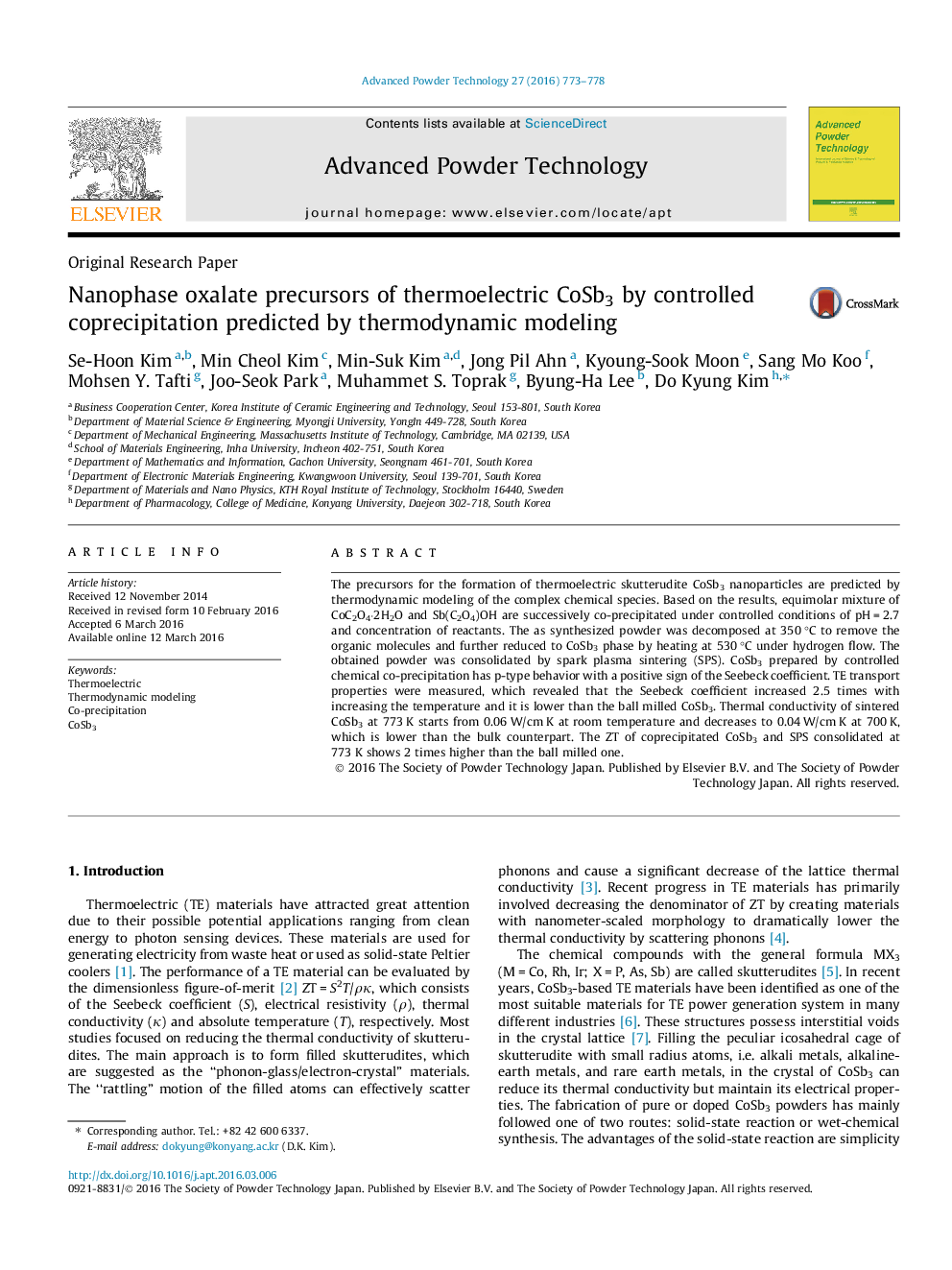| Article ID | Journal | Published Year | Pages | File Type |
|---|---|---|---|---|
| 144156 | Advanced Powder Technology | 2016 | 6 Pages |
•CoSb3 nanoparticles were synthesized by thermodynamic modeling.•Highly monodispersed precursors of CoSb3 nanoparticles were coprecipitated.•Method to synthesized nanoparticle with complex composition was established.•The ZT of coprecipitated CoSb3 shows twice higher than the ball milled one.
The precursors for the formation of thermoelectric skutterudite CoSb3 nanoparticles are predicted by thermodynamic modeling of the complex chemical species. Based on the results, equimolar mixture of CoC2O4·2H2O and Sb(C2O4)OH are successively co-precipitated under controlled conditions of pH = 2.7 and concentration of reactants. The as synthesized powder was decomposed at 350 °C to remove the organic molecules and further reduced to CoSb3 phase by heating at 530 °C under hydrogen flow. The obtained powder was consolidated by spark plasma sintering (SPS). CoSb3 prepared by controlled chemical co-precipitation has p-type behavior with a positive sign of the Seebeck coefficient. TE transport properties were measured, which revealed that the Seebeck coefficient increased 2.5 times with increasing the temperature and it is lower than the ball milled CoSb3. Thermal conductivity of sintered CoSb3 at 773 K starts from 0.06 W/cm K at room temperature and decreases to 0.04 W/cm K at 700 K, which is lower than the bulk counterpart. The ZT of coprecipitated CoSb3 and SPS consolidated at 773 K shows 2 times higher than the ball milled one.
Graphical abstractFigure optionsDownload full-size imageDownload as PowerPoint slide
